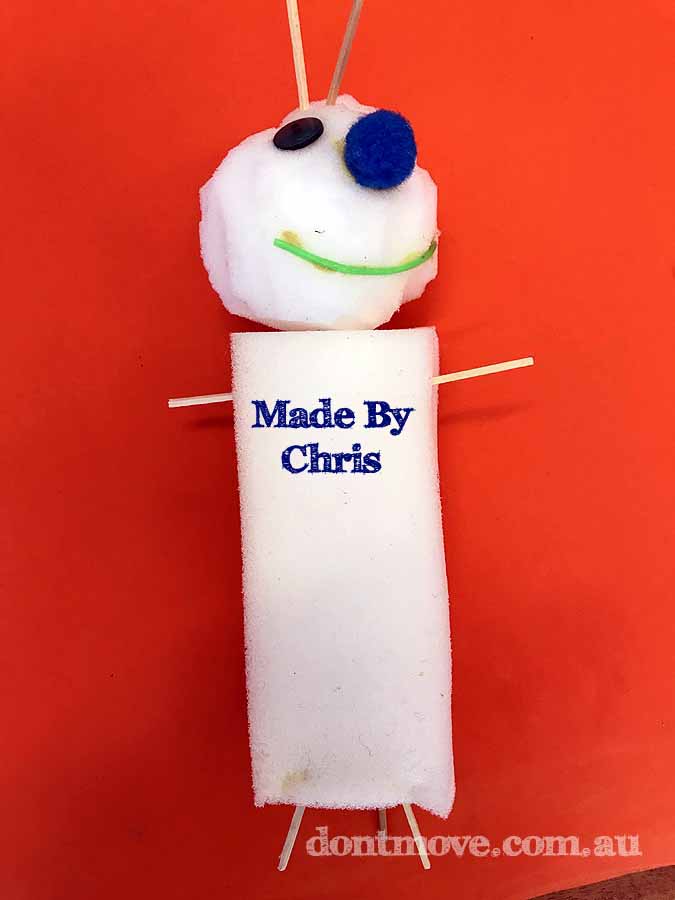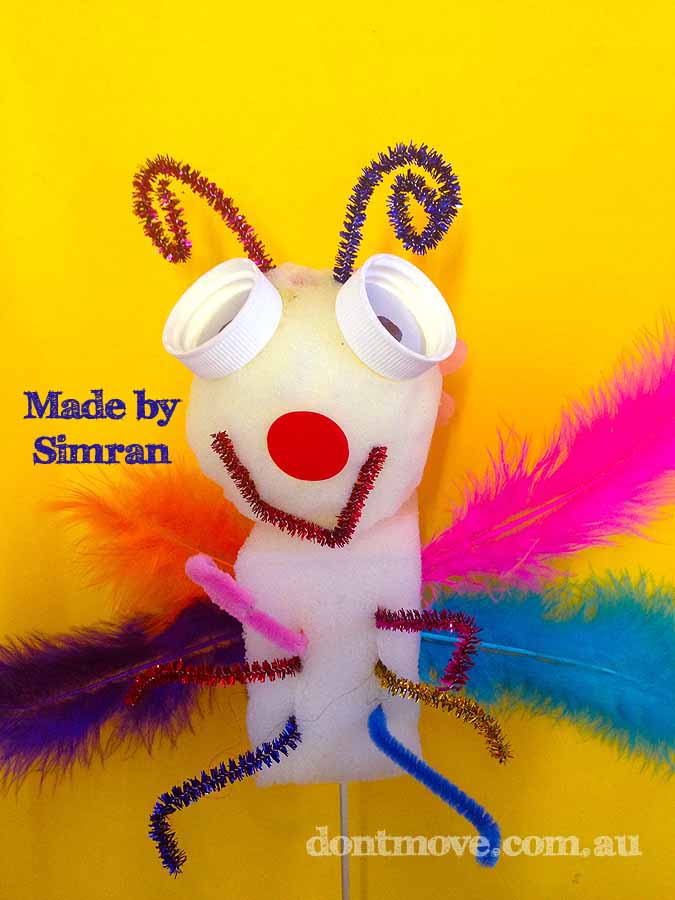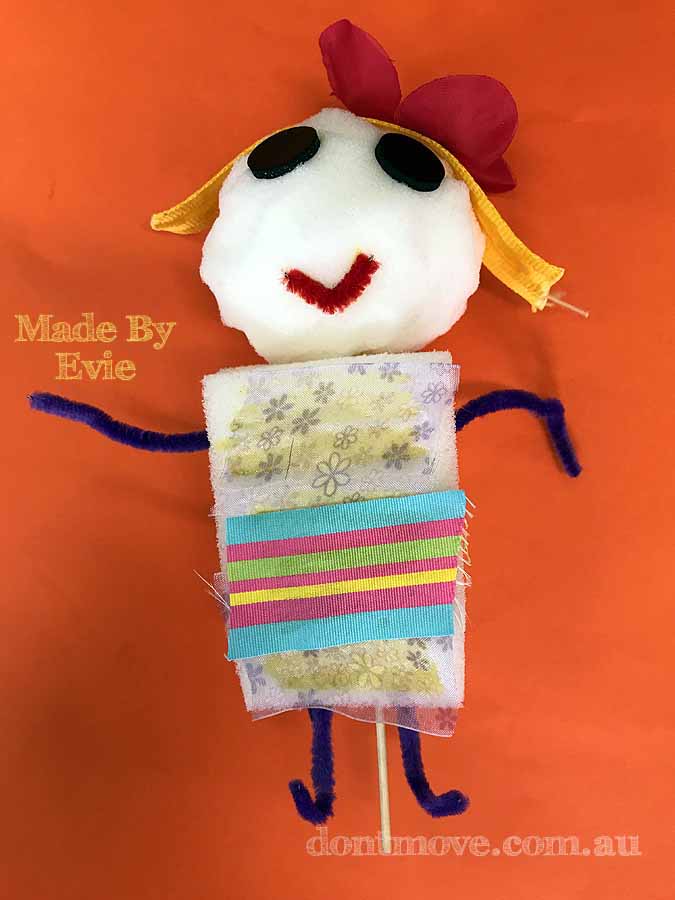The following are suggestions of ways “Don’t Move Puppet Theatre” could fit into the AusVELS Level 4.

 These are just a few suggestions, there would certainly be many more. Excerpts are taken directly from the Victorian Curriculum and Assessment Authority website here.
These are just a few suggestions, there would certainly be many more. Excerpts are taken directly from the Victorian Curriculum and Assessment Authority website here.
[See the other levels here: Foundation Level Level 1 Level 2 Level 3 Level 5 Level 6]

Both my show and workshop incursions fit easily into THE ARTS curriculum. Students are shown behind the scenes of my puppet theatre and learn a great deal about performance. The workshops also develop a hands on approach to creativity and art. Even my handouts after each visit encourage the children to be creative in making their own mini theatres from a ‘colouring-in’ poster.
“Students apply and develop their arts knowledge by exploring arts processes and ways to communicate concepts arising from their personal experiences and from the world around them. Through the arts disciplines of Dance, Drama, Media, Music and Visual Arts, both individually and in combination, they communicate ideas, observations and feelings using a range of media, materials, equipment and technologies to make arts works”

In CIVICS AND CITIZENSHIP confidence in your own abilities and public speaking are developed. Drama has a large influence on this area of development. After seeing my show or making a puppets, students can be encouraged to perform their own works, including writing simple scripts or performing infron of their peers.

COMMUNICATION is important in all aspects of life. At the beginning of my show sessions I discuss how to be a good audience member, how to listen well and join in when appropriate. Much of this is covered in the communication topic as per below.
“Students listen attentively when required and learn to respond and interject appropriately. They practise paraphrasing what a speaker has said to check meaning and ask clarifying questions where meaning is unclear. Students explore a range of aural, written and visual communication forms They learn how to identify the main message, develop their own interpretation, and provide evidence to support it. During both formal and informal presentations, students explore the use of a range of verbal and non-verbal strategies, to enhance meaning and to engage their audience; for example, physical positioning in the room and use of props, costume, humour and audience participation.”

My puppet making workshops easily fit into the DESIGN, CREATIVITY & TECHNOLOGY topic . Children learn to use different materials in new ways at the same time as being creative and letting their imaginations grow. My workshops are constantly used for this technology based topic to great result. Many of my workshop materials are recycled.
“Students begin to provide input into the development of design briefs. They generate ideas from a variety of sources, and recognise that their designs have to meet a range of different requirements. They learn to make realistic plans for achieving their aims and recognise that they are constrained by the availability of resources. They clarify ideas when asked, and use words, labelled sketches and models to communicate the details of their designs. Students learn to describe ideas and concepts about design, materials and technological systems in simple terms. what characteristics and properties make materials suitable for a particular design or proposed product and how these can be combined in innovative ways to create solutions. In transforming novel ideas into products or simple systems, they are encouraged to take risks. With assistance, they learn to plan basic steps in production. They develop skills in the use of a variety of simple production techniques, such as cutting, mixing, shaping, joining and assembling and a range of materials to produce products, for example, a puppet with moving parts (levers). They learn to use tools and equipment safely, and with some accuracy, to alter and combine materials and put together components to make a simple system with moving parts. Students are encouraged to give and receive feedback about their own and others’ products and simple systems (for example, a toy with moving parts), considering whether design solutions work and if they are appropriate for their purpose. They learn to keep simple records and reflect on the steps they took to design and make their own products and simple systems, including noting any problems encountered and changes made to accommodate these.”

My performances and their relevance to developing stories and scripts in ENGLISH are obvious. After seeing a show and behind the scenes, students are always inspired to go away and create their own shows for each other. I suggest how students can make their own theatres and I have seen this happen immediately when I return to the same school the following day.
“Students listen to, read, view and interpret spoken, written and multimodal texts in which the primary purpose is aesthetic, as well as texts designed to inform and persuade. These encompass traditional oral texts including Aboriginal stories, picture books, various types of print and digital texts, simple chapter books, rhyming verse, poetry, non-fiction, film, multimodal texts, dramatic performances, and texts used by students as models for constructing their own work. Students create a range of imaginative, informative and persuasive types of texts including narratives, procedures, performances, reports, reviews, poetry and expositions. They discuss how authors and illustrators make stories exciting, moving and absorbing and hold readers’ interest by using various techniques, for example character development and plot tension. They understand, interpret and experiment with a wide range of devices and deliberate word play in poetry and other literacy texts. Create literary texts by developing story lines, characters and settings, draft and publish imaginative, informative and persuasive texts containing key information and supporting details for a widening range of audiences, demonstrating increasing control over text structures and language feature. Rehearse and deliver presentations incorporating learned content and taking into account the particular purposes and audiences”.

My shows and workshops can encourage talk of the HISTORY of puppetry. The obvious benefits of drama can also help students be more confident in sharing their work on history through different forms of communication including oral, graphic, written and role play.

Many of my shows touch on aspects of INTERPERSONAL DEVELOPMENT. In particular, “The Wizard’s Tale”, “Three Animal Stories” and “Punch & Judy” partially deal with friendship, getting along and bullying being unacceptable. Other shows too have strong morals written within them without necessarily being the theme or learning focus of the shows. Theatre and drama in general also has avery positive effect on children’s confidence and personal character.
MATHEMATICS & SCIENCE are also involved in a hands on way during my workshops. I discuss three dimensional shapes as the students endeavour to cut out a spherical head for their puppet from a cube shaped piece of foam. Even watching the clock to wait three minutes for glue to dry can be a valuable learning experience.




